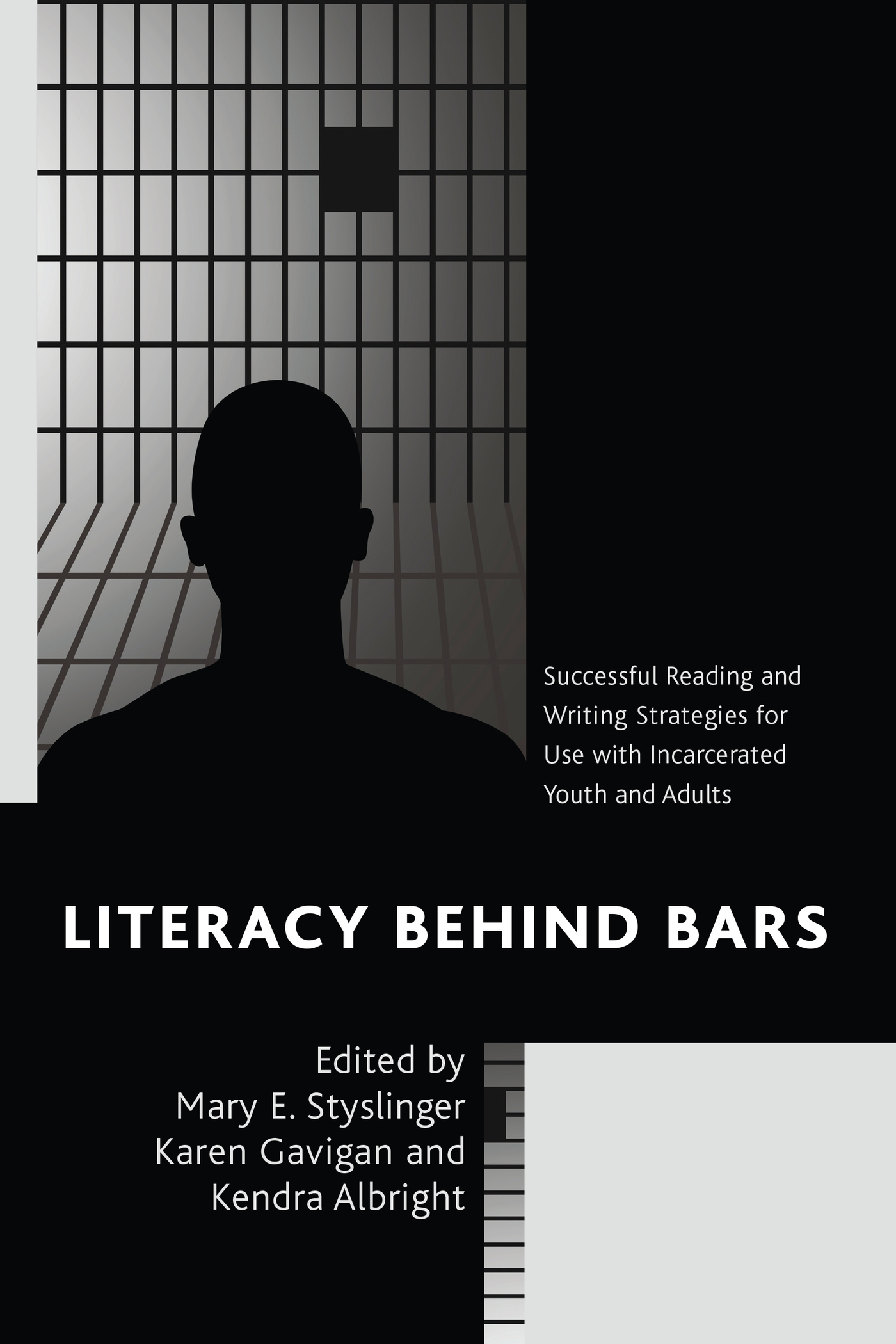Literacy behind Bars
Literacy behind Bars
Successful Reading and Writing Strategies for
Use with Incarcerated Youth and Adults
Edited by
Mary E. Styslinger
Karen Gavigan
Kendra S. Albright
ROWMAN & LITTLEFIELD
Lanham Boulder New York London
Published by Rowman & Littlefield
A wholly owned subsidiary of The Rowman & Littlefield Publishing Group, Inc.
4501 Forbes Boulevard, Suite 200, Lanham, Maryland 20706
www.rowman.com
Unit A, Whitacre Mews, 26-34 Stannary Street, London SE11 4AB
Copyright 2017 by Rowman & Littlefield
All rights reserved. No part of this book may be reproduced in any form or by any electronic or mechanical means, including information storage and retrieval systems, without written permission from the publisher, except by a reviewer who may quote passages in a review.
British Library Cataloguing in Publication Information Available
Library of Congress Cataloging-in-Publication Data Available
LCCN 2016039818 | ISBN 9781442269255 (pbk. : alk. paper) | ISBN 9781442269262 (electronic)
 TM The paper used in this publication meets the minimum requirements of American National Standard for Information Sciences Permanence of Paper for Printed Library Materials, ANSI/NISO Z39.48-1992.
TM The paper used in this publication meets the minimum requirements of American National Standard for Information Sciences Permanence of Paper for Printed Library Materials, ANSI/NISO Z39.48-1992.
Printed in the United States of America
Foreword
William G. Brozo
I have stated many times over the course of my career in speeches, books, and articles (see Brozo, 2011) that our instructional approaches and innovations are only as good as their responsiveness to the neediest adolescents and adults among us. If our literacy strategies and practices are effective for competent and capable adolescents but of little value for struggling readers and writers, then their overall worth must be questioned. Nowhere is this more germane than in the area of corrections education. Because these young men and women failed to receive effective instructional and social supports within schools and communities, they are now at a point in their lives when meaningful and critical literacy interventions may be a necessity for their very survival (Tatum, 2009).
Teachers, social workers, clergy, and other concerned and committed professionals who journey behind the fences know well the necessity to learn about these adolescents and adults as individuals. Thus, responsive instruction for incarcerated youth and adults must involve getting to know their learning histories and literacy challenges, as well as their aspirations and interests both inside and outside of the correctional facilities that detain them.
Although we have a large and growing volume of data to delineate the contours of the problem with dropouts and their vulnerabilities to drugs, gangs, and related criminal activity, what is more difficult to find in the professional literature are practical guidelines for leavening the literacy abilities of youth once they find themselves behind bars and fences. To be sure, K12, school-based preventive approaches that identify and bolster struggling and at-risk readers and writers are far preferred; however, when the system leaves them behind, they cannot be forgotten, as they are in need of responsive literacy work more than at any other time in their lives.
Literacy behind Bars: Successful Reading and Writing Strategies for Use with Incarcerated Youth and Adults is a unique book in that it is devoted entirely to expanding reading and writing literacy for those who have been ill served by traditional schooling policies and practices, which surely contributed to their institutionalization. The authors of the eleven chapters share their stories of rolling up their sleeves and doing the work that must be done to transform the literate lives of imprisoned youth and adults. The lessons learned from these experiences provide instructional direction for anyone who is presently engaged in similar work or is planning to do so. The range of topics taken up by the chapter authors/corrections educators represent important skills and abilities individuals behind bars and fences must develop if they are to leave these institutional settings with an improved chance of success in life outside (Muth, Walker, & Casad, 2014; Vacca, 2004).
Readers of this book will learn how effective practices for increasing word knowledge, improving writing to learn about text and self, fostering critical reading comprehension, and supporting application of literacy strategies across the disciplines were enacted within actual contexts of incarceration. The descriptions of the authors experiences crafting responsive literacy curriculum and interacting with youth and adults around various reading and writing practices reflect the deep understanding the authors possess of these unique individuals, including an openness to knowing more about who they are within their special institutional circumstances. Thus, one appreciates the authentically contextualized nature of the practices advocated and taught, making it easier to envision the possibilities of similar practices for youth and adults in other correctional settings.
Styslinger, Gavigan, and Albright invite like-minded and similarly dedicated professionals to explore Literacy behind Bars in order to become armed with new ideas and insights for enlarging the life potential through literacy of those men and women behind the fences. For me, each chapter in this book is a reminder that while large data sets may offer shocking evidence of need, the real work of corrections education, as with any interventional work, is most effective when it is local and personal.
References
Brozo, W. G. (2011). RTI and the adolescent reader: Responsive literacy instruction in secondary schools. New York, NY: Teachers College Press/International Reading Association.
Muth, W. R., Walker, G., & Casad, S. J. (2014). The presence of time in the lived experiences of prisoners: Implications for literacy workers. Journal of Correctional Education, 65, 211.
Tatum, A. (2009). Reading for their life: (Re)building the textual lineages of African American adolescent males. Portsmouth, NH: Heinemann.
Vacca, J. S. (2004). Educated prisoners are less likely to return to prison. Journal of Correctional Education, 55(4), 297305.
Preface
Overview of the Field
The United States has the highest prison population rate in the world. Despite the fact that our country has less than 5 percent of the worlds population, we house almost 25 percent of the total prison population (Lee, 2015). Over the past forty years, the prison population in the United States has grown from 250,000 to nearly 2.5 million (The Pew Charitable Trusts, 2010), and there has been an especially sharp rise in youth incarceration in the past two decades (Saltman & Gabbard, 2003). These numbers are even more alarming for minority populations (The Pew Charitable Trusts, 2010).
As a nation, the United States incarcerates more citizens than China, Iraq, Iran, Afghanistan, North Korea, Venezuela, and Cuba combined (Hartney, 2006). Our incarceration rate is about six times that of Canada, between six and nine times that of western European countries, and between two and ten times that of northern European countries (Lee, 2015). These numbers are staggering. So what can be done to help stay the ever-increasing numbers?
Studies have shown there is a strong connection between incarceration and education. Hernandez (2011) compared reading scores and graduation results of almost four thousand students and determined that a student who cant read on grade level by third grade is four times less likely to graduate by age nineteen than a child who does read proficiently at that time. If the student who cant read on grade level lives in poverty, then that same student is thirteen times less likely to graduate on time. Couple this fact with a study by researchers at Northeastern University who found that about one in every ten young male high school dropouts is in jail or juvenile detention centers as compared to one in thirty-five young male high school graduates (Sum, Khatiwada, McLaughlin, & Palma, 2009), then the connection between a lack of literacy and the nations growing prison population can be made. The picture is even bleaker for African Americans, with nearly one in four young black male dropouts incarcerated or otherwise institutionalized on an average day.
Next page
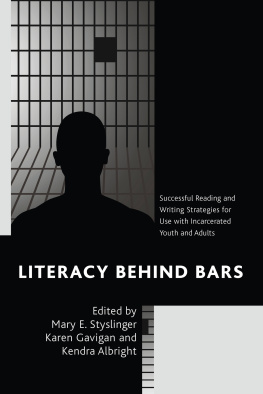
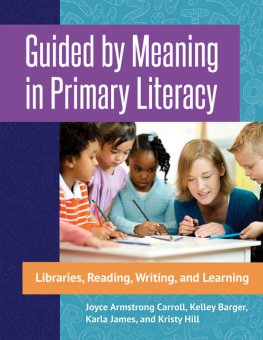
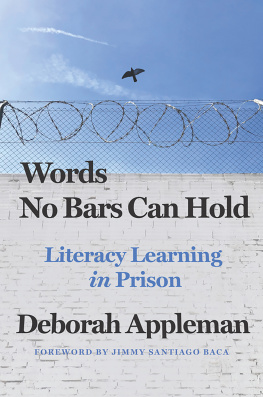
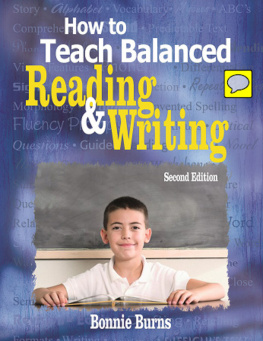

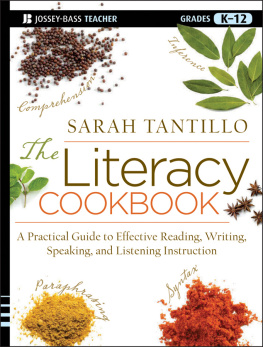
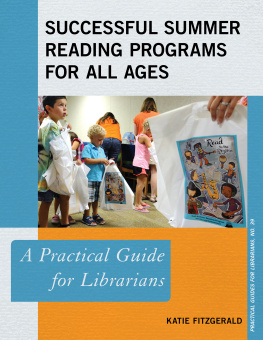
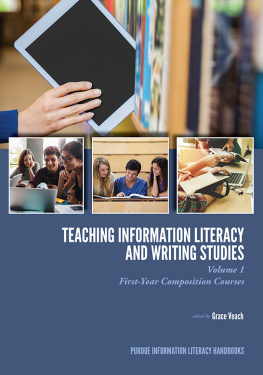
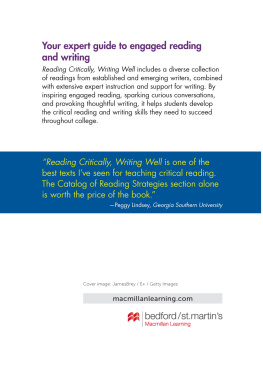
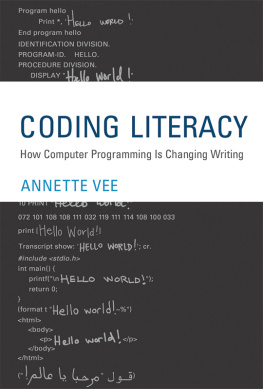

 TM The paper used in this publication meets the minimum requirements of American National Standard for Information Sciences Permanence of Paper for Printed Library Materials, ANSI/NISO Z39.48-1992.
TM The paper used in this publication meets the minimum requirements of American National Standard for Information Sciences Permanence of Paper for Printed Library Materials, ANSI/NISO Z39.48-1992.